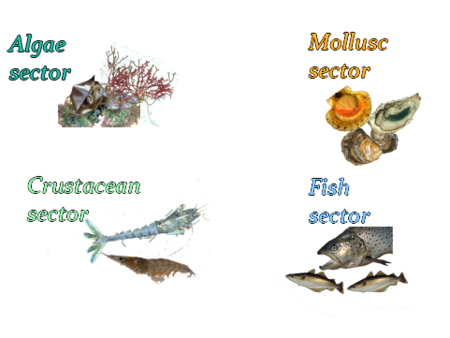Cockles
Name : | Cockle |
|---|---|
Scientific name : | Cerastoderma edule |
Size : | The maximum size is 4-5 cm. |
History: from the pioneers to present…
Cockles, which naturally occur along the French coasts from the Channel to the Mediterranean, is mainly fished.
Since the 1980s, cockle culture has been developing in Croisic Sound, which is the only cockle aquaculture site in France.
Culture techniques and production cycle
Spat of around 10 mm is mainly collected by dredging in Vilaine Bay.
The spat is then seeded from mid-September to mid-May at a density of 3-4 kg/m2.
Spat can also be naturally recruited from June to September during the cockle reproduction period.
The culture to marketing period is 10-15 months after seeding.
Cockles are harvested mechanically, so they can be graded at the collection sites.
Cockle production
Annual cockle yields range from 1200 to 2000 tons, and Croisic Sound is the second ranking cockle production site in France after Somme Bay (2000-7000 t fished).
Product value enhancement
Cockles are mainly consumed raw but they can also be processed (canned and prepared dishes)..
Cockle figures
(Source 2002 : Affaires Maritimes St. Nazaire)
150 | hectares of cockle aquaculture in Croisic Sound |
|---|---|
149 | concessions allocated for cockle aquaculture |
36 | companies involved in this sector |
2,4 | million € in annual revenues generated |
1 200 | tons in cockle production |
Strengths / Weaknesses
Strengths | Weaknesses |
|---|---|
|
|

